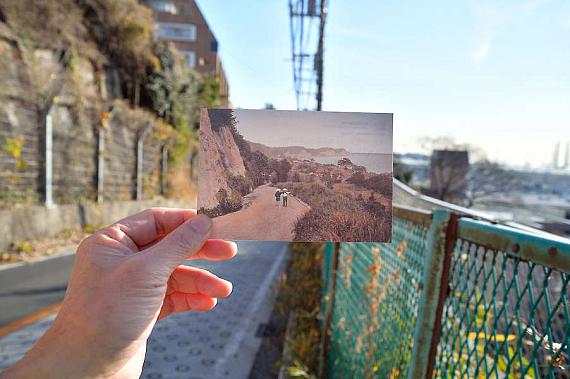
Naoya Hatakeyama »
YOKOHAMA SOUVENIRS
Artist Meets Archive #3: Internationale Photoszene Köln
Exhibition: 12 May – 17 Sep 2023
Fri 12 May 15:00
Museum für Ostasiatische Kunst
Universitätsstr. 100
50674 Köln
+49 (0)221-28608
mok@museenkoeln.de
www.museenkoeln.de/mok
Tue-Sun 11-17

KUSAKABE KIMBEI: "1015. CAVE IN ENOSHIMA", 1890ER JAHRE
© Museum für Ostasiatische Kunst, Köln Foto: Rheinisches Bildarchiv
Naoya Hatakeyama (b. 1958 in Rikuzen-takata, Iwate Prefecture, Japan) is an artist and photographer based in Tokyo. He graduated from the University of Tsukuba in 1984 with a degree in art from Japanese photographer and photo-theoretist Kiyoji Otsuji. Known for a series of extensive works dealing with the relationship between nature and civilisation, he has created a thoughtful panorama of images showing places and landscapes shaped by industrialisation and urbanisation since the 1980s.
Hatakeyama's work features series on landscapes and architecture that document a man-made nature in which he himself, however, no longer appears. In Germany, Hatakeyama photographed, among other things, the controlled detonation of the Westfalen I/II Zeche in 2003. Furthermore, he was awarded the Kimura Ihei Award of Photography in 1997 and the Mainichi Art Award in 2000.
For his exhibition at the Museum of East Asian Art, Naoya Hatakeyama uses photographs of Japanese landmarks from the Meiji era of Japan (1868-1912) as inspiration for his own photographic investigation of these places. He is interested in the temporal aspect that lies between the tourist views of the time and the landscape of today. The playful juxtaposition of archive material and his own photographs also opens up the spectrum between photography as a document and photography as a work of art.

Naoya Hatakeyama (*1958 in Rikuzen-takata, Präfektur Iwate, Japan) ist ein in Tokyo lebender und arbeitender Künstler und Fotograf. 1984 schloss er sein Kunststudium beim japanischen Fotografen und Fototheoretiker Kiyoji Otsuji an der Universität Tsukuba ab. Bekannt für eine Reihe von umfangreichen Arbeiten, die sich mit dem Verhältnis von Natur und Zivilisation beschäftigen, schuf er seit den 1980er Jahren ein nachdenkliches Bildpanorama, das Orte und Landschaften zeigt, die durch Industrialisierung und Urbanisierung geprägt sind.
Hatakeyamas Werk umfasst Serien zu Landschaften und Architekturen, die eine vom Menschen geschaffene Natur dokumentieren, in der er selbst jedoch nicht mehr vorkommt. In Deutschland hat Hatakeyama im Jahr 2003 unter anderem die Sprengung der Zeche Westfalen I/II fotografiert. Er wurde 1997 mit dem Kimura Ihei Award of Photography und 2000 mit dem Mainichi Art Award ausgezeichnet.
Für seine Ausstellung im Museum für Ostasiatische Kunst verwendet Naoya Hatakeyama Fotografien von japanischen Sehenswürdigkeiten aus der Meiji-Ära Japans (1868-1912) als Inspiration für seine eigene fotografische Untersuchung dieser Orte. Dabei interessiert ihn der zeitliche Aspekt, der zwischen den damaligen touristischen Ansichten und der heutigen Landschaft liegt. Die spielerische Gegenüberstellung von Archivmaterial und seinen eigenen Aufnahmen öffnet darüber hinaus das Spektrum zwischen der Fotografie als Dokument und der Fotografie als Kunstwerk.